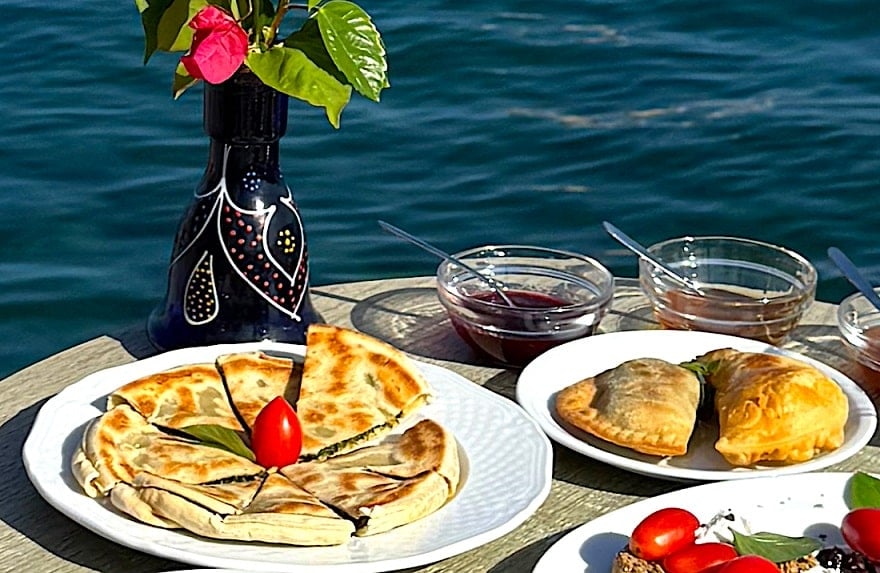

Officials are campaigning to have sfakianopita, the delicious pita made only on Greece’s island of Crete, registered on UNESCO’s Intangible Cultural Heritage List, Municipality of Sfakia representatives announced on Greek public television ERT.
This special pita made from a traditional recipe in Sfakia in southern Crete is both very simple and special. It is made with a thin layer of unleavened dough filled with soft mizithra cheese, a little tsikoudia—the traditional Cretan drink made of grapes known as raki in other parts of Greece—olive oil, and salt.
Traditionally, the pita was roasted on hot stones. However, today, it is fried with no oil. People who visit Sfakia and try this traditional Cretan delicacy just can’t get enough of it, and its name has made its way around the world.
Sfakia Mayor Yiannis Zervos spoke on the public broadcaster about the initiative to have sfakianopita added to the UNESCO Intangible Cultural Heritage List. According to Zervos, in collaboration with the Region of Crete, authorities are in the process of collecting the necessary documentation so as to submit the complete file to UNESCO.
Zervos underlined that sfakianopita is not only a defining food of the Sfakia region, but is also acclaimed worldwide. Achieving UNESCO recognition would safeguard its traditional Cretan pita preparation techniques and the use of premium Cretan ingredients.
People of Sfakia continue to pass down this culinary heritage to younger generations, he said, adding that such recognition would significantly enhance Crete’s visibility on a global level.
Sfakianopita was originally known as the food of Cretan shepherds. Through the years, it has become a symbol of Cretan hospitality. Sfakianopita is enjoyed throughout Crete for breakfast, as well as a snack accompanied by tsikoudia or for dessert drizzled with honey.
This pita of Crete seems simple enough to make because of its ingredients. Yet, there are certain secrets to its preparation. It requires both patience and practice.
To make a good sfakianopita, ample kneading is required, and the cheese needs to be kneaded into the dough. The dough should be well kneaded first and then allowed to rest for an hour for the gluten bonds to relax.
If the cheese is soft and something like pychtogalo, galomyzithra, or xinomyzithra is used, it should be well drained because, otherwise, it will make the phyllo soggy. The cheese should not be frozen when it is added to the dough.
You then make as many cheese balls as dough balls. With half a kilogram of flour, for instance, you can make ten eighteen-centimeter pitas. Expert sfakianopita makers can make fifteen quite thin pitas with the same amount of flour.
Once you have prepared the filled dough balls, it is important to press them gently with your hand and let them sit for half an hour on a floured towel before you try to roll them out into a thin pie. Do not roll them out immediately.
When you start to roll the dough out after half an hour, it should be done with calm and steady movements. Spread the pie out with a rolling pin so as to make it as wide as possible in the pan so that the cheese is also spread out evenly in the dough.
Use an oiled paper towel and rub a non-stick pan with the towel. Then place the sfakianopita on medium heat. You can be certain you’re on the right track when the top sheet rises and it starts puffing up from the steam created by the cheese heating up. This means that there are no holes for the steam to escape through, and the cheese has melted evenly within the pita.
The sfakianopita of Crete is ready to enjoy when it is speckled brown and is crispy.
